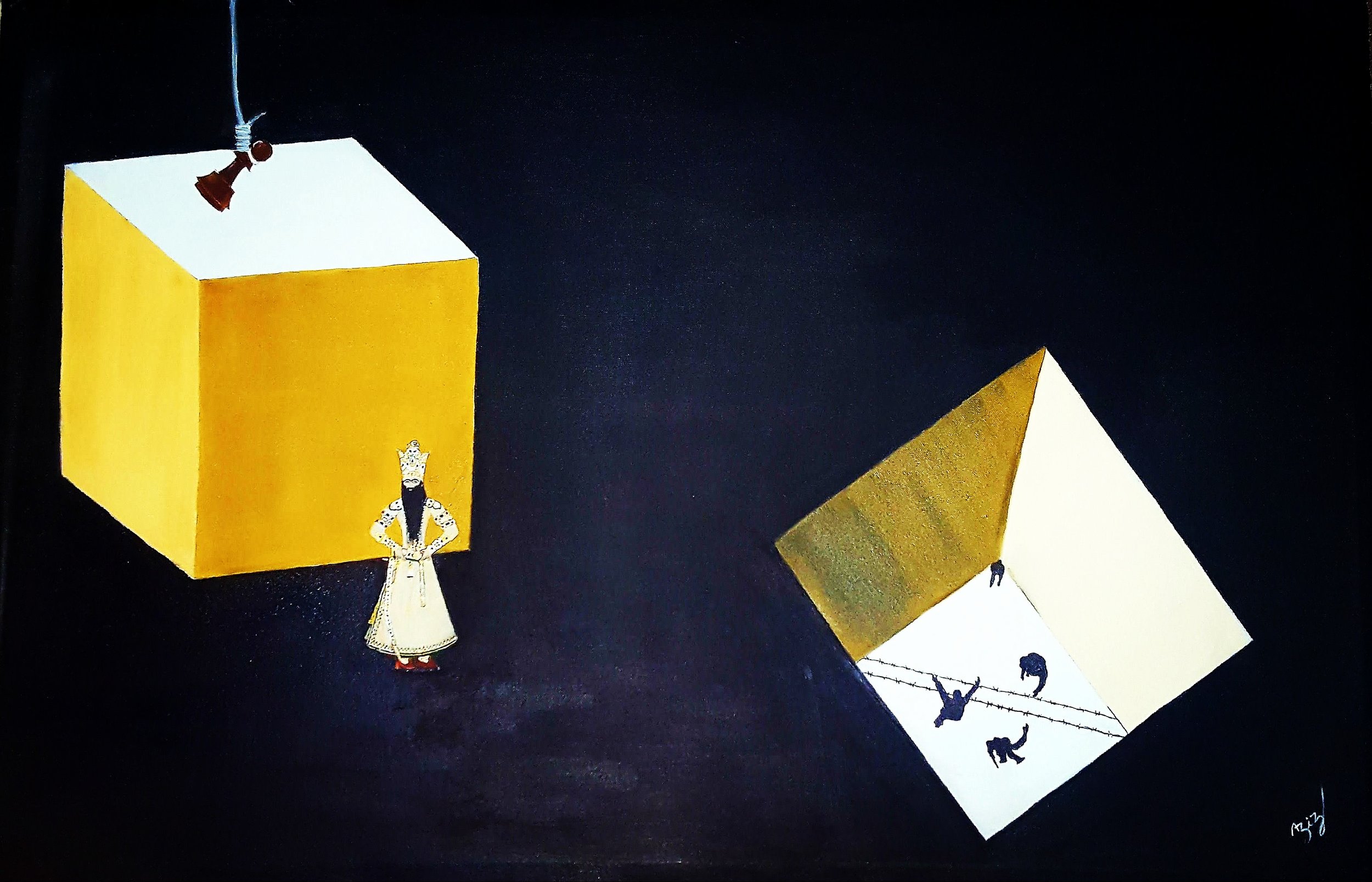Interview with Aziz Anzabi

“In all my journeys, I only think about one thing and that is to reach.
But reach where?
All my “where” questions are summarized in nowhere.
To come up with an idea and to perform it. It repeats, Idea-performance, Idea-performance and then freedom from internal suffering. To release the cry in the labyrinth of my own spirit”
Tell us about how you decided to become an artist and why?
At an early age, I developed a fascination for drawing; I drew on everything and everywhere, whether it was the walls of my house or paper. This passion of mine caught my dad’s attention, and he decided to introduce me to a traditional Irani artist, and thus, at the age of 5, my art journey began.
What influences your creation processes, and how is that reflected in the final artworks?
War and immigration are subjects that I consider central in my investigations, hence news articles about socio-political issues influence my creativity when it comes to creation. I come up with different sketches until I'm happy with the one I can turn into a finalized piece. Moreover, I think it's important to highlight that the media I analyze has a niche. I focus on news from the Middle East, where women are often undermined, and social, political, and economic matters have a heightened conflicted environment - more than in western cultures.
Aziz Anzabi, Above water level
Aziz Anzabi, Lost in Time, 2017
What was an artwork you especially enjoyed creating and why?
Above Water Level 1 was the work I loved creating because I was delighted with how It turned out. In this piece, I brought my vision to life by combining the Iranian art style with Western art to convey the effect of dictatorship on people's lives.
As stated, Middle East culture has such strong and conflicted realities, constantly drawing my attention to work from it. In Water Level 1, I found an intersection of both cultures and merging my perception of these in one image was thrilling.
Are you aiming to create social impact or engender any change in the art world?
I'm trying my best to use art as a resource to provide a new form of media, where people do not need to watch the news to understand what is going on in the world. Art is so lovable and enjoyable to view in so many ways. By aiming to provide information throughout art, it would be easier and more serene for people to be aware of latent problems while digesting the information in a more accessible way.
Aziz Anzabi, Hallucination
How does your art create meaning or deliver your message?
The fact that my pieces encompass such delicate subjects and issues that are still ongoing makes it possible for them to deliver my message. I combine different elements in my art to narrate a story and all these elements convey overlapping social messages. One of them may be the stereotypes placed on women, e.g., in my work, Lost Time, for example.
With my art, I seek to deliver these harsh realities more softly through images and yet still raise awareness.
My style is also unique, which is relevant to the objective of my artistic pursuits. Few people know how to use the peeling paper technique and the materiality of the pieces is deeply related to the message I'm communicating. The the paper's softness contrasts with the canvas's texture; such that combining Surrealist and Qajar styles creates a new medium of art that is neither entirely Western nor fully Iranian.
Aziz Anzabi Atelier
Aziz Anzabi in his studio.
Do you have a dream project?
A few years ago I I worked on the “Tunnel of Time” series. I wanted to mix jewelry on the canvas with the painting, the purpose to being to place the jewels in the Qajarian Kings and Queens clothes.
This exercise was a trial and error; I intended to create the jewels myself to place them on the painting, however, I failed multiple times. This idea has not left my mind, and it is still on my radar.
Hopefully, one day, I will find someone to build the jewelry pieces in the way I imagine them so that I can create the works and show them in a museum.
Aziz Anzabi, Time Out






